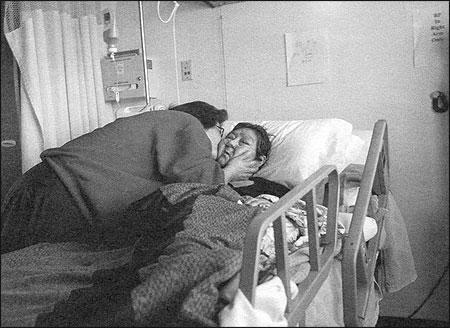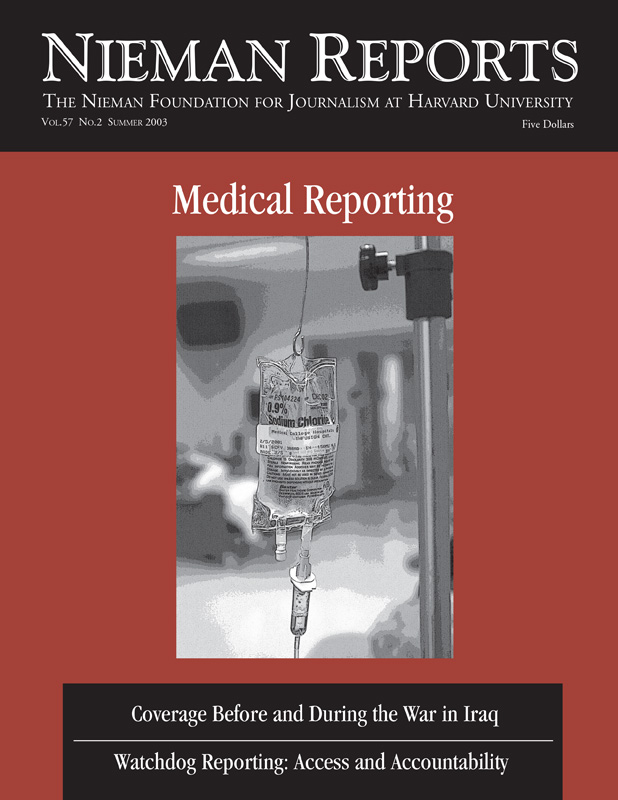When I chose to attend the journalism school at the University of Wisconsin-Madison, my great dream was to report and tell stories that depicted people of color, especially Native Americans, in a realistic and holistic manner as members of their community.
In 1999, after spending nearly 15 years at daily newspapers as a photographer, photo editor and writer, I began working freelance as a photojournalist. My work focuses on native issues, except for occasional forays I make into the mainstream world for business purposes. Gradually, through this work, I’ve come to know myself again as an Indian woman readjusting to the rhythm of Indian country. From this experience and my work in mainstream media, I’ve gained insight into what makes native and non-native people distinct and what we all share as human beings.
As I traveled throughout Indian country, I quickly became aware of the pervasiveness of Type II diabetes. Among some native people, I discovered innovative approaches that communities were using to address the issue. Community leaders and health care workers adamantly agreed that they were engaged in a fight for the survival of Indian people. It was clear that decades of mainstream medical practices weren’t working. Health worker Lorelei DeCora demonstrated this to me when she shared a story with me about seeing the floor of an Indian Health Service clinic that was littered with Type II diabetes prevention pamphlets. All the patients at this Indian Health Service facility were being treated for diabetes-related problems. DeCora knew that informational pamphlets weren’t going to change lives.
So DeCora and a group of reservation leaders embarked on addressing this epidemic in their community. I was struck by the scrappy, grass-roots quality of their work and the unique “Indian way” in which they approached it. They identified a problem, saw what didn’t work, and created solutions of their own that were accepted and practiced by members of the community. And their efforts worked. In “Whirling Thunder,” diabetics and those at risk participate in an exercise program, diet counseling, and cooking classes. For those who want to more effectively control their disease, there are intensive three to five day “Talking Circles.” More than 35 percent of the tribal members who participated in the “Talking Circles” reported weight loss and improved glucose levels.
I found this work incredibly inspiring and realized this story needed to be told. What I saw in this community’s work had the distinct possibility of helping other Native Americans and people of color. I spent a lot of time hanging out on the Ho-Chunk “rez” in Nebraska waiting for the visual storytelling elements to emerge. And they did, slowly and deeply, sometimes unexpectedly. When an eagle swooped over their home, the Little Owl family rushed outside to blow their just arrived eagle bone whistles. The eagle responded with his distinct cry. This was a moment that captured the sense of a deeply felt cultural connection. I paused in the Hy-Vee grocery store with Brigette Little Owl as she carefully read the ingredients of regular vs. low-fat Bisquick. I sat in her kitchen as she and her husband, Orville, injected their daily insulin shots.
As the project unfolded, I began to see people’s lifestyles and their relationship to food as being deeply woven into their lives and cultural background. Foods that natives describe as “normal and comfortable” are inexplicably tied to cultural or spiritual experiences. To make lifestyle changes is difficult for native and non-native people. For the Ho-Chunk people, a wellness program needed to recognize their spiritual connection to their daily lifestyle and their food and then address them, preferably in a manner that is culturally relevant.
Recently I learned that Johnson & Johnson awarded $50,000 dollars to the Ho-Chunk nation’s “Whirling Thunder” program, largely based on the information from the story, “The Ho-Chunk Way,” that I did in The Washington Post. In that story, I profiled the high incidence of Type II diabetes among native people and focused on the Ho-Chunk tribe’s approach to diabetes prevention, control and management through a unique regimen that preserves their cultural traditions.
With this story—and news of this award to the tribe—I feel I’ve taken another small step towards realizing the dream I had when I entered journalism school. It’s not often that I experience this type of gratification as a journalist, and I am savoring it.
Mary Annette Pember is a freelance journalist based in Cincinnati. Her work has appeared in Life, Time, Newsweek, The New York Times, Native Peoples, Indian Country Today, and other publications. She is a member of the Red Cliff Band of Wisconsin Ojibwe and executive director of the Native American Journalists Association. Her work is at www.mapember.com.

Participants in the “Team Up” project on the Winnebago Reservation in Nebraska share their feelings during a Talking Circle held after a feast celebrating their successful completion of the program. During the emotional event, members expressed gratitude and a growing sense of hope about living with diabetes. The project is a grass-roots effort by tribal health workers to influence lifestyle change among the community’s diabetics. The circle is an important symbol among native people and is emblematic of their belief system. The Little Owl family participated in the “Team Up” project.

Georgia Gomez kisses her mother, Mabel Denny St. Cyr, as she lies in her bed in a tribal nursing home. Mabel died of blood sepsis during dialysis due to diabetes. In her last days Mabel could neither eat nor drink. She received all nourishment via intravenous tubes. Georgia, an emergency medical technician for the tribe, has dedicated herself to educating her people about diabetes prevention.

Kendall Little Owl winces at the unexpected tartness of his fat-free, sugar-free frozen yogurt cone. The family works hard at making a healthy diet a natural part of their lives.

Brigette Little Owl carefully reads labels of food she buys for the family. She is comparing regular vs. light Bisquick.

Kendall Little Owl tests his blood sugar level. This testing is very much a part of his family’s life. Both of his parents are insulin dependent. His younger brother has tested positive for acanthosis nigricans, a predictor of insulin resistance. The family struggles to create and maintain lifestyle changes to reduce the chances that the sons will develop the disease and improve the parents’ chances for longer lives.

Kendall Little Owl shows indications of acanthosis nigricans. A dark spot, which is an indicator, was discovered during routine screenings done at the tribal school. This discovery offers an opportunity for early diabetes prevention in children.

Orville and Brigette Little Owl sit at their kitchen table as they prepare their second insulin injections of the day.

Orville Little Owl teaches his son Kendall how to blow an eagle bone whistle. The whistle is an important element in Plains Indian ceremonies. Ho-Chunk culture plays a significant role in the family’s daily life.
Photos by Mary Annette Pember.


